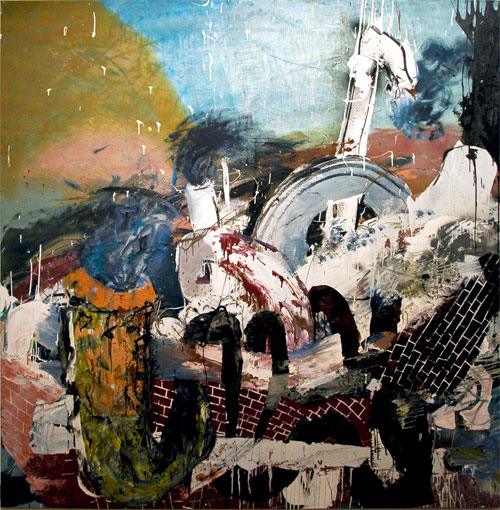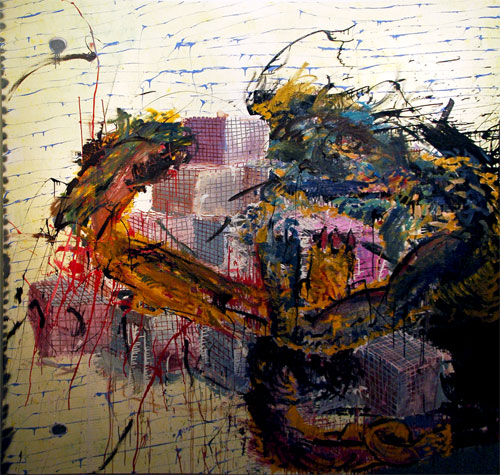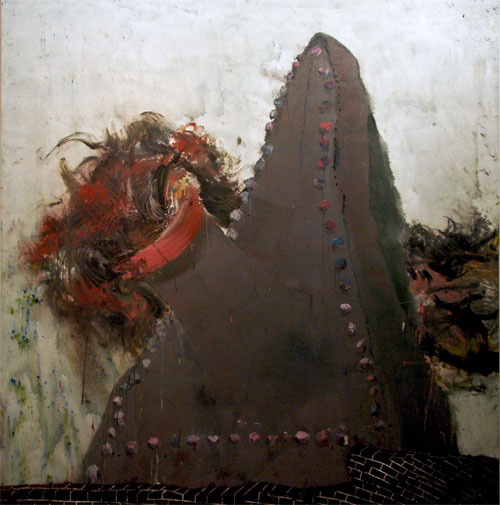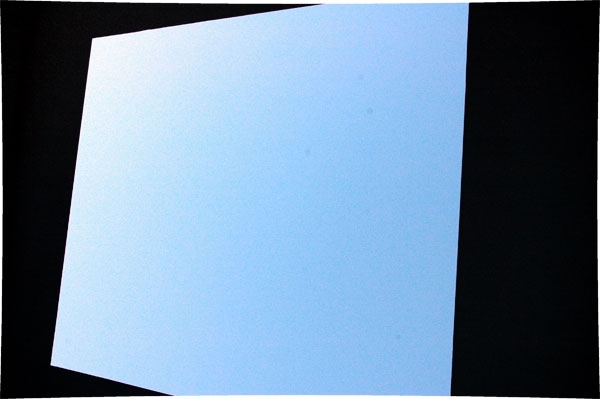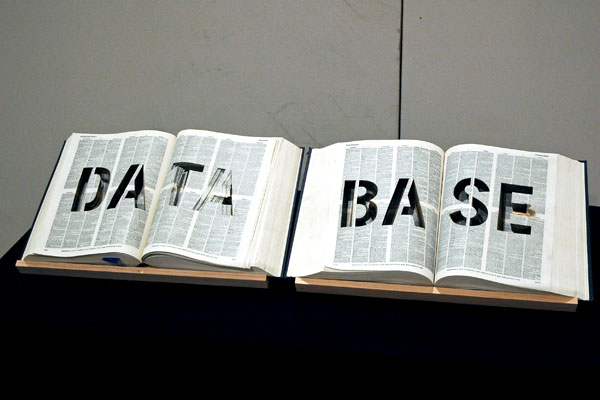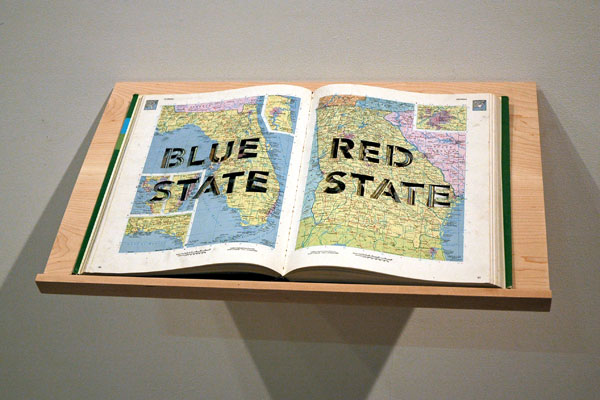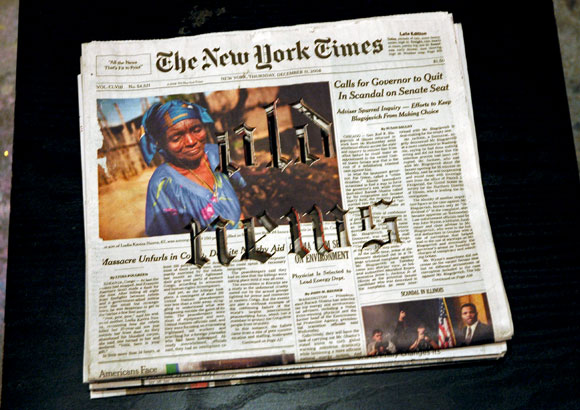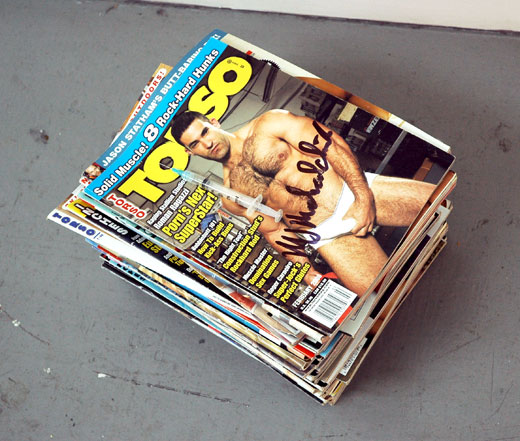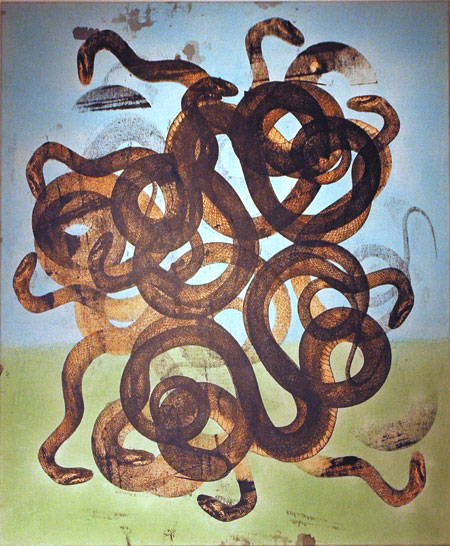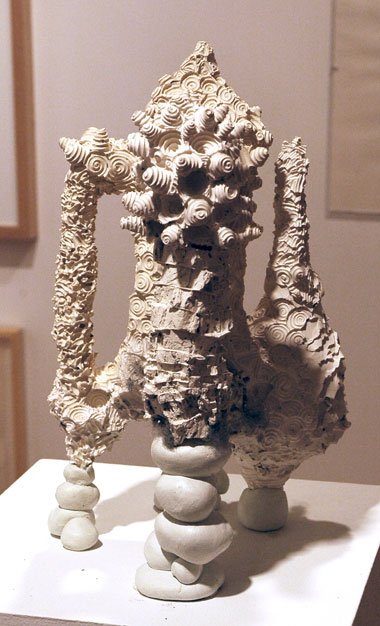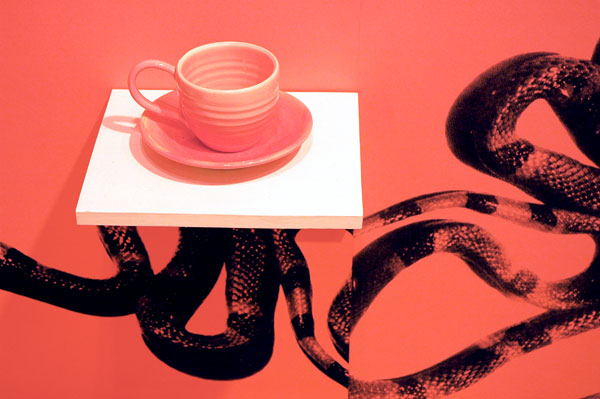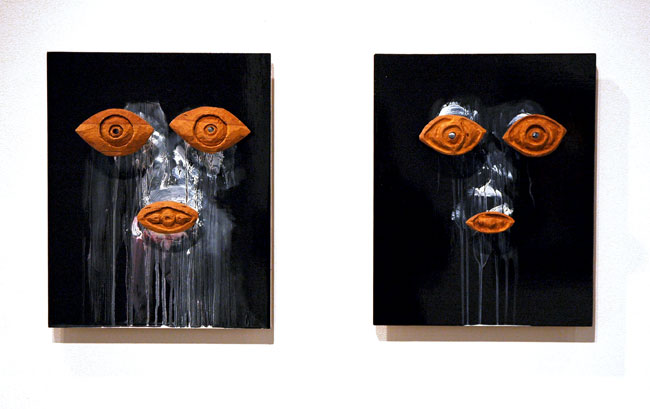
Björn Meyer-Ebrecht
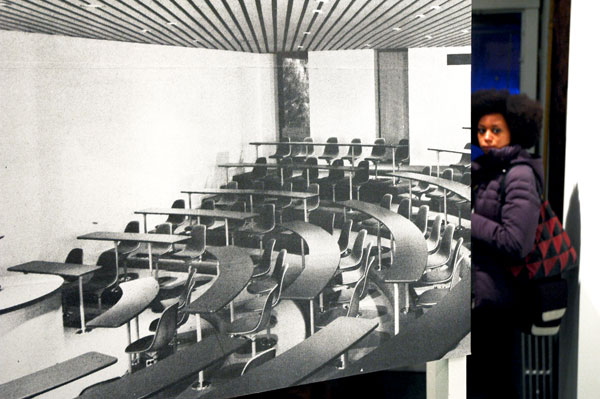
Björn Meyer-Ebrecht Untitled (D) 2008-2009 laser prints, wood, paint, spray paint, 4 panels, each 69" x 32" x 21" [two details of installation, photographed during opening reception]
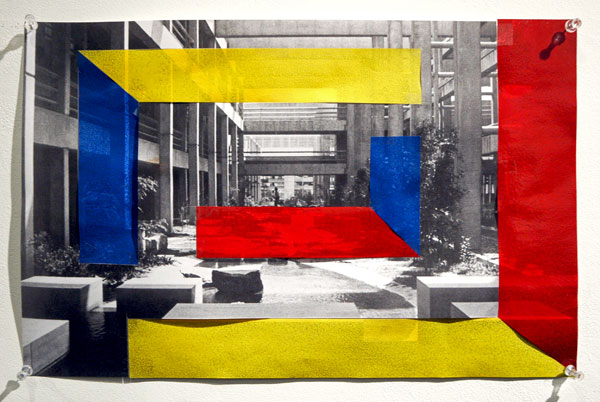
Björn Meyer-Ebrecht Untitled (red/yellow/blue) 2009 collage, laser print, spray paint, transparent tape 10.75" x 16.75" [installation view]
Among my many other passions, some disclosed here in the past, I'm a sucker for mid-century architecture and design. In work being shown at Pocket Utopia through the middle of next month, and in images available on his own site, Björn Meyer-Ebrecht presses that button and a few more besides. In Bushwick, in a gallery installation he shares with Elissa Levy and Kay Thomas, he has installed a single four-part sculpture down the center of the narrow gallery and hung several small collages on one side wall.
Today we are all children of the Bauhaus, with the signal exception of the American suburban family, which even in the twenty-first century almost unfailingly chooses neo-whatever for its domestic shelters, er . . . castles.
German-born Meyer-Ebrecht's work might include an element of (sophisticated) nostalgia, but his affections are not wasted on garrsion colonials, or even Alpine cottages. He "constructs" drawings, collages and sculptures from found black-and-white images of the interiors and exteriors of modernist buildings, most of them built in a post-war Germany rising phoenix-like from its ashes and its shame, struggling to make good its pre-1933 promise. They generally betray a kind of modest optimism largely absent from the architecture of today.
Some of the images depict the clean minimal spaces which were designed to house the "architects" of a new representative democracy in Germany. Some are of buildings designed by German architects, refugees or exiles, but constructed elsewhere in the world. All seem to be images of virginal spaces, in specific environments. They are yet to be occupied by people, although a human presence is suggested by the tools of habitation that architects must provide.
The images, if not the buildings they depict, are all historical artifacts. The artist cuts and paints, and sometimes saws; he adds abstract "windows" and (sometimes) translucent panels of color to make them his own, to make them ours.
They are utopian. They seem to be the labor of a love he shares with us. They thrill me.
This is the last paragraph of the statement which Meyer-Ebrecht has included on his own site:
I see my drawings in many ways as portraits. The buildings often look at me like human figures that at the same time seem to both hide and reveal their inner lives. I see them also as portraits of the architects with their very particular historic experiences of emigration and their individual new beginnings after World War II. And finally these drawings are also portraying a particular time period. In my imagery of this time I find a particular atmosphere that interest me, maybe the feeling of soberness, of something absent or hidden. I am especially intrigued by the absence of history, I could call it a form of collective amnesia, which reverberates in these images.

